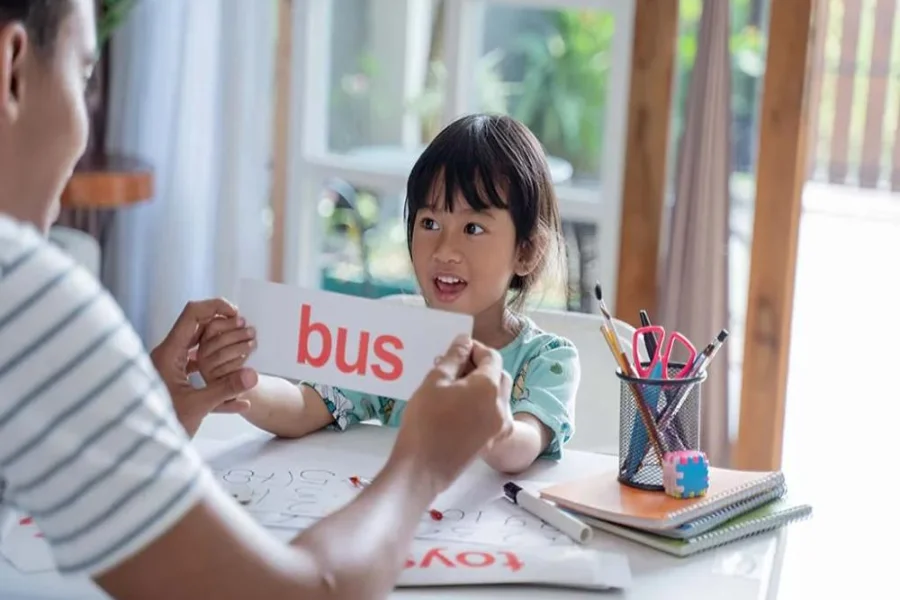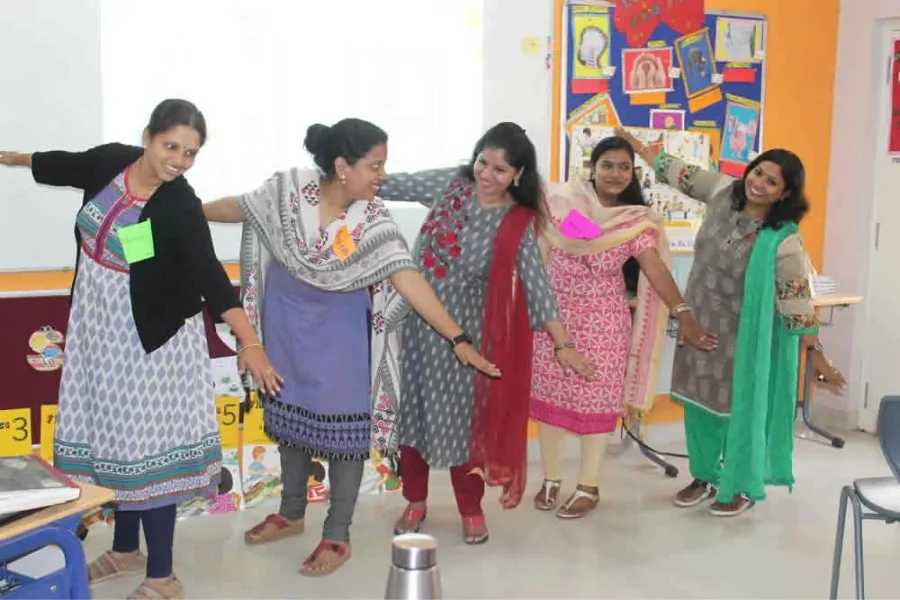Word Phonics Explained: A Simple Guide for Parents

Source: ruthmiskin
Word Phonics Explained: A Simple Guide for Parents
Understanding how children learn to read can feel puzzling at first, but Word Phonics makes it easier. This easy method associates letters with the sounds they make, helping children sound out words confidently.
Parents play a central role in early reading, and comprehending Phonics can make that journey smoother. In this blog, you’ll find clear answers and assistive tips to support your child using Phonics Word at home.
Table of Content

Source: parenting
How Phonics Helps Children Learn to Read?
Word Phonics is one of the most compelling approaches to aid early literacy. It helps children acknowledge the connection between letters and sounds, laying a robust basis for reading and writing. Through everyday exposure, Phonics Helps Children Learn to Read by building the skills essential for fluency, spelling accuracy, and reading comprehension.
Here’s how Phonics contributes to each key area of reading development:
Builds Reading Fluency
Phonics trains children to decipher unfamiliar words promptly by sounding them out. With practice, this process becomes automatic, permitting them to read more smoothly and with enhanced speed.
- Children begin to recognize patterns in words
- They gain confidence as reading becomes less frustrating
- Fluent reading improves attention span and focus during reading tasks
Improves Spelling Skills
When children understand Phonics, they learn how words are constructed. This makes spelling easier and more logical.
- They can break down words into smaller sounds (phonemes)
- They understand how letters represent those sounds
- They become more accurate in spelling both familiar and new words
Supports Reading Comprehension
Reading is not just about saying words—it’s about understanding them. Phonics Word enables children to read with accuracy, so they can concentrate on meaning rather than decoding.
- Decoding becomes automatic, reducing cognitive load
- They can follow stories and understand details more easily
- Better comprehension leads to greater enjoyment of reading
By using Word Phonics consistently, parents and educators can support children’s literacy skills in a meaningful way. It serves as a stepping stone that connects sounds to language, helping young readers grow with confidence.
For the details of Phonics Teacher Training Course, Call / Whatsapp on +919869546913 / +919869866277.
Click Here, for downloading the brochure of Phonics Teacher Training Course!
Simple Phonics Activities Parents can Try at Home
Making phonics a part of everyday learning can be enjoyable and effective. With the right mix of fun and structure, Phonics Word can help children build strong reading skills. These simple, engaging Phonics Activities are easy to implement and can turn regular moments into learning opportunities. Activities for Phonics keeps Phonics Word at the centre, making early literacy development both effective and exciting.
The following are the Simple Activities for Phonics Parents can Try at Home:
Sound Hunt around the House
Encourage your child to discover objects that start with a particular sound. Say the sound clearly (e.g., /b/) and ask them to find items like “book,” “bag,” or “ball.”
- Say the sound out loud several times.
- Let the child repeat it.
- Guide them to search for and name objects starting with that sound.
- Emphasize the Word Phonics concept by connecting the letter to the sound.
Clap the Syllables
Break down words by clapping for each syllable. For example, clap once for “cat,” twice for “ta-ble.” This builds sound awareness, which supports Phonics Word development.
- Start with short words and step by step increase the difficulty.
- Use everyday objects and names.
- Ask your child to guess the number of claps before checking.
Phonics Hopscotch
Draw letters in boxes on the ground. Call out a sound, and your child has to jump to the correct letter.
- Focus on beginning sounds at first.
- Mix in tricky letters to challenge them.
- Reinforce Phonics Word by asking them to say a word that begins with the letter they jump on.
Letter-Sound Match Cards
Create flashcards with pictures and letters. Children match each picture to the letter it starts with.
- For example, “sun” goes with “S,” “apple” with “A.”
- You can use magazine cut-outs or printouts.
- After matching, ask your child to say the sound and the full word to strengthen their Phonics skills.
Rhyme Time Games
Play games that focus on rhyming words. This boosts listening skills and reinforces patterns in words.
- Say a word and let your child come up with its rhyming word.
- Use rhyming books and pause to let your child guess the next rhyme.
- This helps them recognize similar sounds and improves Phonics understanding.
Mystery Bag Game
Fill a bag with objects beginning with different sounds. Let your child pick one and guess the beginning letter.
- Say the word together slowly.
- Stretch the beginning sound to emphasize it.
- Relate it to the Phonics Word concept by showing how the sound connects to the letter.
Phonics Songs and Chants
Sing songs that highlight specific letter sounds. These are memorable and make connecting sounds to symbols easy.
- Use simple tunes they already know.
- Include hand motions or actions to make it even more engaging.
- Repetition supports long-term memory of Phonics Word concepts.
Using these easy Phonics Activities at home helps create a consistent and enjoyable learning environment. With Phonics Word at the heart of each game, parents can build a solid foundation for reading and spelling—one sound at a time.
Click Here, for downloading the brochure of Phonics Teacher Training Course!
For the details of Phonics Teacher Training Course, Call / Whatsapp on +919869546913 / +919869866277.

Source: phonicspower
Tips for Parents to Learn Phonics Themselves
Knowing Word Phonics is necessary for helping children become confident readers. Many parents want to support their child’s reading journey but feel unsure about where to begin. Learning Phonics word as a parent can be uncomplicated with the correct guidance and practice. The Phonics Teacher Training Course offered by Vidhyanidhi Education Society (Govt. Regd.) provides valuable tips for parents to learn phonics effectively at home.
Here are some practical Tips for Parents to Learn Phonics Themselves:
Start with Letter-Sound Correspondence
Learn the sounds each letter corresponds to. Focus on short vowels and common consonants before starting with blends and digraphs.
Use Phonics-Based Resources
Flashcards, phonics storybooks, and sound charts can help reinforce Phonics Word through daily practice.
Watch and Learn
Video tutorials and interactive apps demonstrate correct pronunciation and help in recognizing sound patterns.
Practice Blending and Segmenting
Try easy exercises to blend individual sounds into words or split words into sounds—fundamental skills in Phonics Word.
Enroll in a Training Program
The Phonics Teacher Training Course by Vidhyanidhi Education Society (Govt. Regd.) is designed to guide parents step-by-step through phonics concepts. It simplifies teaching methods and includes practical tools that can be used at home.
Follow a Daily Practice Routine
Set aside 10–15 minutes daily for Phonics Activities. Repetition builds sound recognition and confidence.
Stay Updated with Phonics Strategies
The Phonics Teacher Training Course also updates parents on current strategies and techniques used in schools.
By following these tips and learning through a structured program like the Phonics Teacher Training Course, parents can confidently support their child’s reading development through effective Phonics Word Activities.
Master Word Phonics with ease—join Vidhyanidhi Education Society’s Phonics Teacher Training Course today!
Click Here, for downloading the brochure of Phonics Teacher Training Course!
For the details of Phonics Teacher Training Course, Call / Whatsapp on +919869546913 / +919869866277.
FAQs
What Age Should a Child Read Fluently?
Most children begin to read fluently between the ages of 6 to 7 with regular practice and support.
When to Start Reading to Baby?
Start reading to your baby from birth to build listening, language, and early literacy skills.




